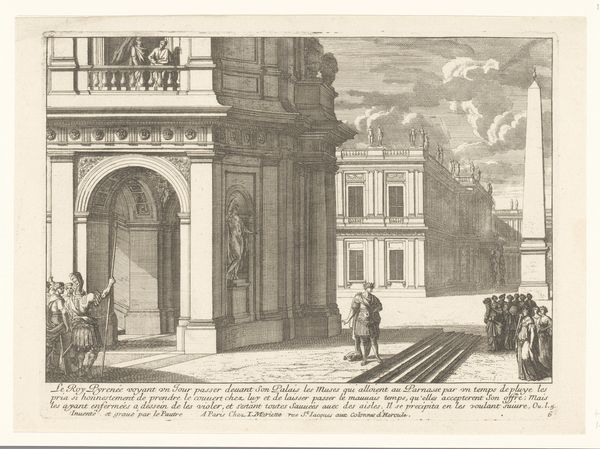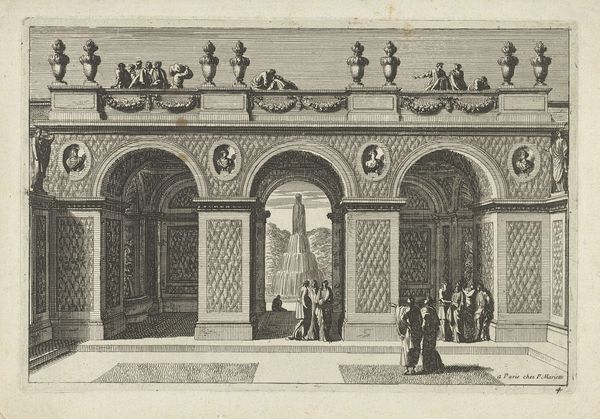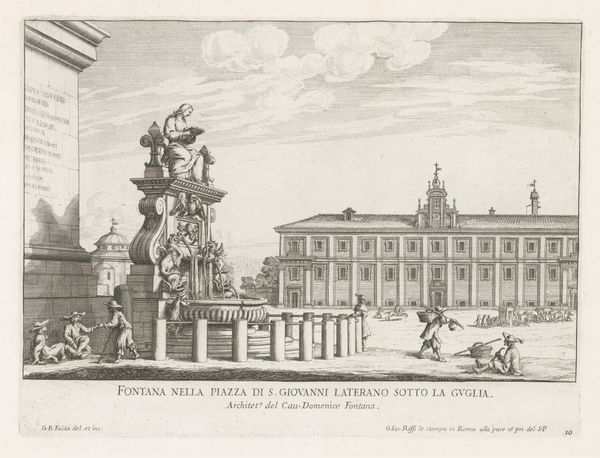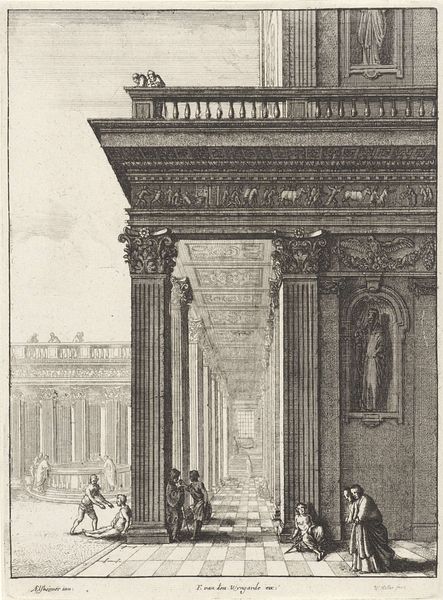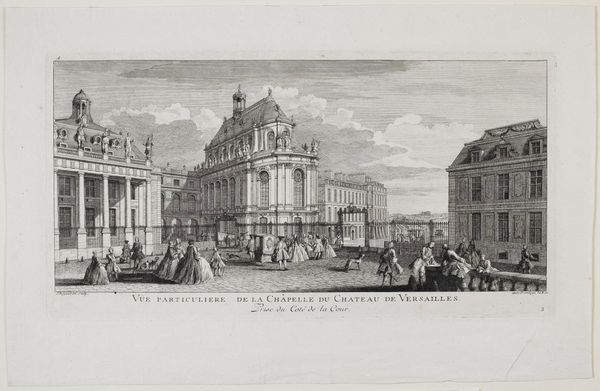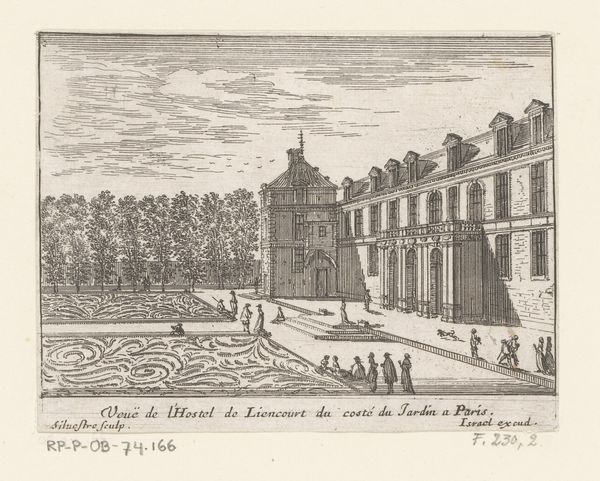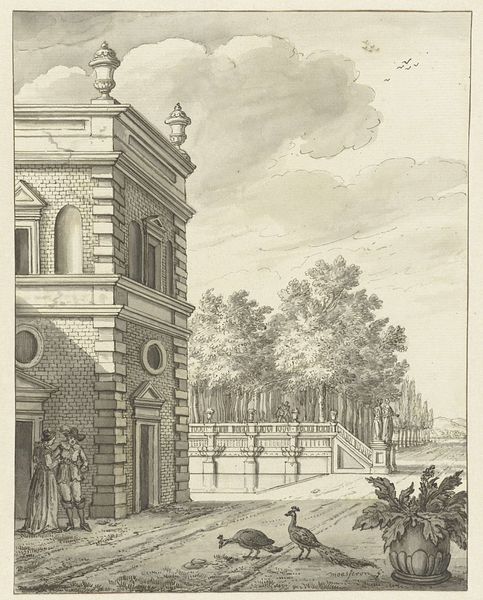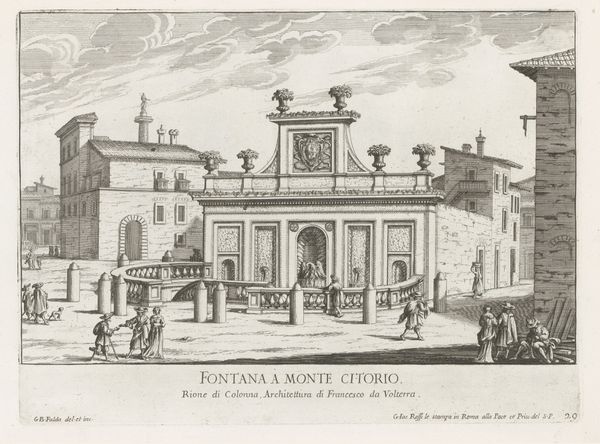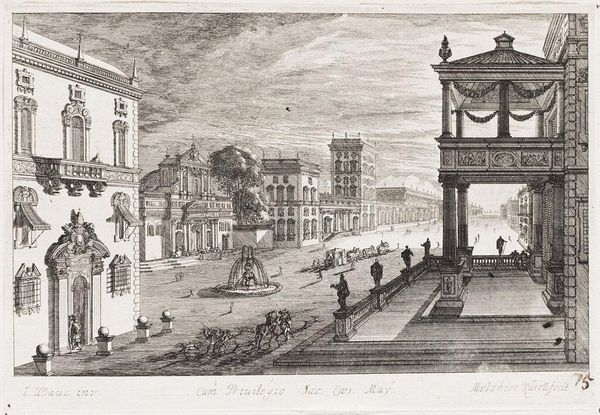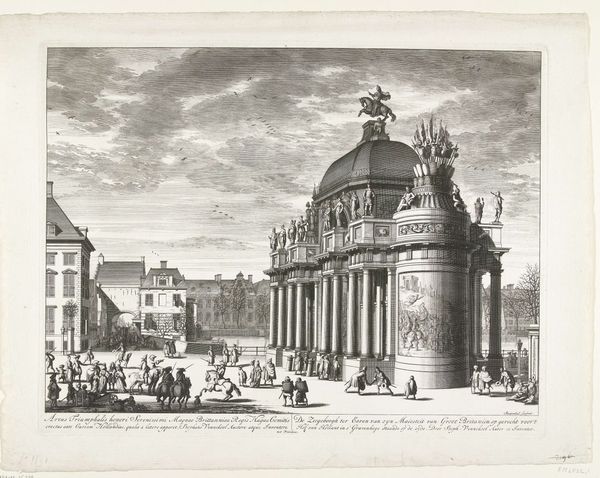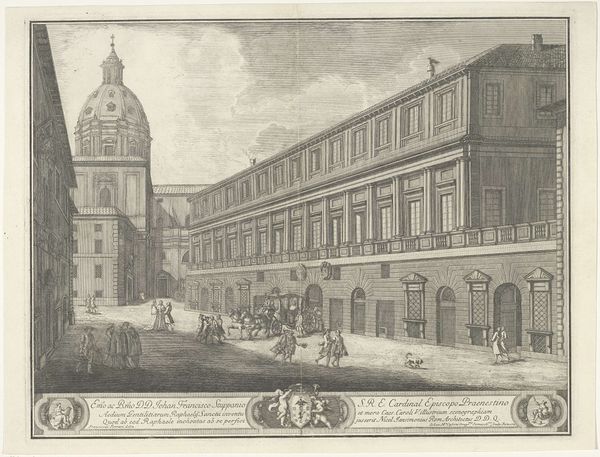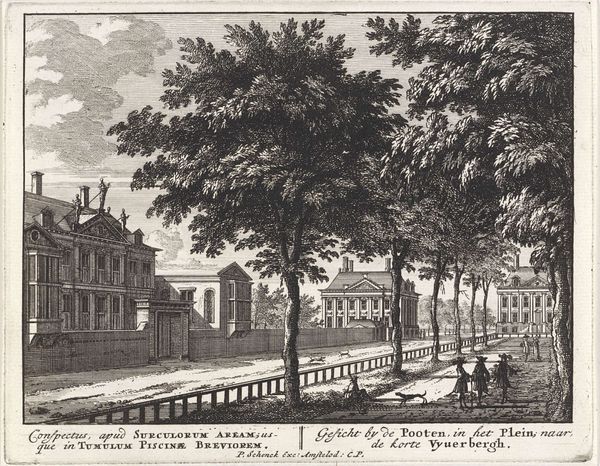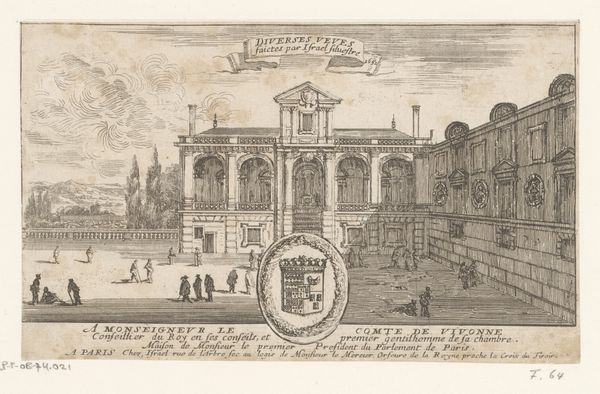
engraving
#
baroque
#
cityscape
#
history-painting
#
engraving
Dimensions: height 167 mm, width 224 mm
Copyright: Rijks Museum: Open Domain
Editor: So, this engraving, "Pyreneus en de Muzen," dating from around 1675-1711, is attributed to an anonymous artist and resides in the Rijksmuseum. There’s a grand sense of space, but also an underlying tension in the composition. What's your take on this piece? Curator: It’s fascinating to view this through the lens of its historical context. History paintings often served to promote or critique power. Notice the architecture: clearly meant to convey power, but the figures almost seem secondary. Where do you think this narrative intersects with social power dynamics? Editor: I see what you mean. It’s a powerful scene, seemingly referencing some myth, and set against an imposing palace, maybe even a warning about authority? Curator: Exactly! The story of Pyreneus relates to violence against the Muses, highlighting a conflict between brute force and intellectual or artistic pursuit. Think about how displaying this image in the public sphere impacts that message. Is it celebratory, or cautionary? What is the political function of visualizing such stories? Editor: That makes me wonder who this piece was intended for. A wealthy patron, or a more general audience? And would that affect how it was received? Curator: Precisely. Considering the broader social context of 17th- and 18th-century Europe, engravings like this disseminated classical stories widely, shaping cultural understanding. Consider the architecture itself. Are there details that resonate with other buildings known from the period, allowing inferences about location and intention? Editor: I hadn't really considered how its reception could change depending on who was looking at it and why! Curator: Indeed, art like this is both a product of its time and an active agent in shaping it. These visualizations help us to examine power relationships and question established orders. Editor: I will remember to consider the intersection between subject, public display and message when studying works of art. Curator: That's what makes analyzing art so interesting. We have to see these objects as being connected within that social and historical moment, in a very direct and impactful way.
Comments
No comments
Be the first to comment and join the conversation on the ultimate creative platform.
